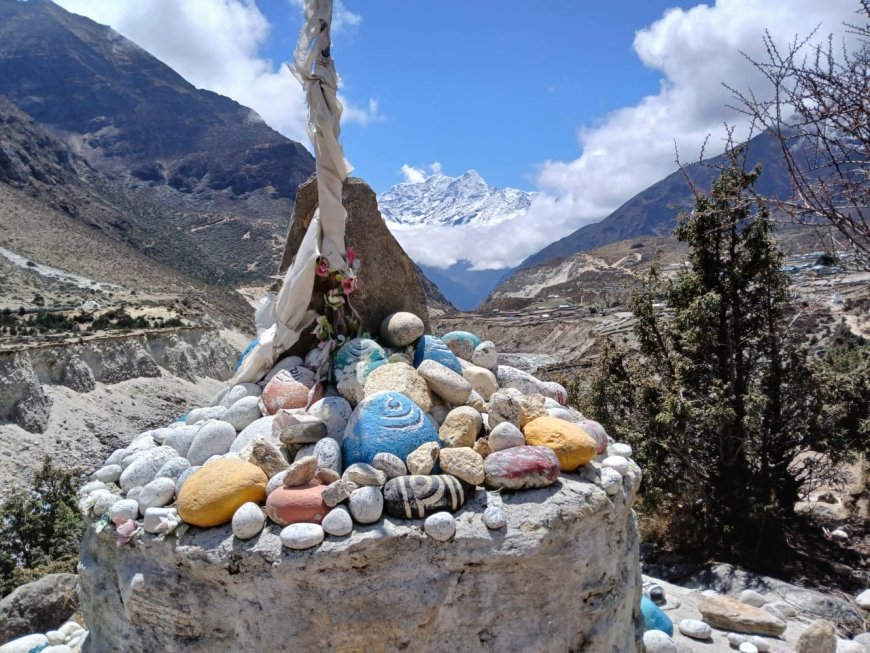How to Pack Light and Efficiently for the Everest Base Camp Trek
Embark on the Everest Base Camp Trek for jaw-dropping vistas, cultural encounters, and a once-in-a-lifetime Himalayan adventure.

Packing light for theEverest Base Camp trek is really important for staying comfortable and safe. If you carry too much, youll tire out quickly, and if you dont bring enough, you might not be ready for the crazy weather or high altitude. Start with clothes that you can layer to stay warm, and pick items that dry easily. Lightweight, moisture-wicking fabrics are great because they keep you cool without adding bulk. Make sure to pack the essentials, like thermal base layers, a warm jacket, and solid trekking boots with good ankle support.
Having a well-organized backpack is a game-changer. Packing cubes or compression bags can help you save space and find your gear easily. Go for compact, multipurpose items like a headlamp, a reusable water bottle, and trekking poles; these really help with balance and can make things easier on your body. Dont forget a basic first aid kit and sunscreen since the sun can be pretty strong up there.
Be smart about your packing and plan for emergencies by bringing extra layers and snacks, but dont load up on stuff you dont need. Aim for a backpack that weighs around 10 to 12 kilograms to keep from getting too tired or injuring yourself. By packing wisely, youll be able to enjoy the stunning scenery and make the most of your trip to Everest Base Camp without feeling weighed down.
Why Packing Light is Key for Everest Base Camp Trekking
Packing light for the Everest Base Camp trek is super important if you want to keep your energy up and avoid injuries on the tough journey. Heavy backpacks can wear you out and slow you down, making the trek tougher. When you pack efficiently, you can move faster, enjoy the views, and put less strain on your joints and muscles. Plus, airlines and porters have strict weight limits, so sticking to the essentials helps you dodge extra fees and treat porters better. Using lightweight, versatile gear lets you adapt to the changeable mountain weather while staying comfy. Packing light also helps keep your stuff organized, making your trek smoother and more fun.
How to Pick the Right Backpack for Everest Base Camp
Choosing the right backpack is an important part of packing well for Everest Base Camp. Look for a comfy and durable backpack thats between 40 to 60 liters to balance size and weight. Features like padded shoulder straps, hip belts, and adjustable back panels can help support you and ease the strain on long trekking days. A rain cover is a must for when the weather turns, and having multiple compartments can keep your gear organized. Steer clear of oversized backpacks that might tempt you to overpack. A well-fitted backpack will help your posture, reduce fatigue, and make moving around the rugged trails easier.
Essential Clothing Layers for Packing Light
Layering your clothing is important for staying warm and dry on the Everest Base Camp trek while keeping your pack light. Start with moisture-wicking base layers to keep sweat off your skin. Add warmth with fleece or down jackets as mid-layers, and finish off with a waterproof, windproof outer layer to shield you from bad weather. Go for lightweight, quick-drying materials to save space. Stay away from cotton since it holds moisture and makes you cold. Pack clothes that can work together to adjust to changing temperatures and conditions. Proper layering helps avoid overheating or getting too cold, so you can comfortably hike without carrying too much gear.
Must-Have Lightweight Gear for Everest Base Camp
To pack effectively for Everest Base Camp, focus on lightweight gear that can serve multiple purposes. Youll need a compact sleeping bag that can handle cold temperatures, a reliable headlamp for early mornings or emergencies, and trekking poles for better stability and less stress on your knees. A reusable water bottle with a built-in filter is great for staying hydrated and cutting down on plastic waste. Dont forget a compact first aid kit, sunscreen, and sunglasses for your health. Choose gear that is durable yet light to keep things functional while still portable. Bringing just the necessary lightweight gear will help you stay safe and comfy during the trek.
Smart Packing Tips to Save Space and Stay Organized
Using smart packing techniques can really help with space and organization for your trek to Everest Base Camp. Compression sacks and packing cubes are great for packing bulky clothes and organizing your gear, making it easier to find what you need. Rolling your clothes instead of folding saves space and keeps them wrinkle-free. Distribute the weight evenly in your backpack, putting heavier stuff close to your back for better balance. Keep frequently used items, like snacks and jackets, in the pockets where they're easy to reach. Use waterproof bags to protect your electronics and important documents from moisture. Staying organized means you wont have to keep unpacking and repacking, letting you focus on enjoying the trek while keeping your load light.
How to Pack Toiletries and Personal Items for Trekking
When you're getting ready for Everest Base Camp, it's smart to pack light when it comes to toiletries and personal stuff. Go for travel-sized, eco-friendly products to save space and be kind to the environment. Bring the basics like sunscreen, lip balm, a small toothbrush, and quick-dry towels. Instead of carrying heavy bottles, switch liquids to smaller containers or use solid options like bar soap and shampoo bars. Pick items that can do more than one job, like a moisturizer with SPF. Keep makeup to a minimum to lighten your pack. Managing your personal care stuff well helps you stay clean without weighing down your backpack, making your trek more comfortable.
Planning Food and Snacks for a Lightweight Trek
Planning your food and snacks wisely can help you carry less while keeping your energy up on the Everest Base Camp trek. Go for lightweight, high-calorie options like nuts, dried fruits, energy bars, and meals that just need hot water. Stay away from heavy canned or fresh foods that can go bad easily. Using reusable containers or zip-lock bags can help cut down on waste and keep your food neat. Eating well with snacks that are easy to carry helps you maintain your strength and adjust to the altitude. By planning your food right, you can enjoy the trek without lugging around extra weight.
Weather Considerations When Packing for Everest Base Camp
When you pack for Everest Base Camp, keep in mind that the weather can change quickly. Temperatures can swing a lot between day and night, and storms can pop up out of nowhere. Bring layers to keep warm and waterproof gear to stay dry. Lightweight thermal underwear and insulated jackets are a must for cold nights, while breathable clothes help you keep cool during the day. Don't forget waterproof gloves, hats, and gaiters to guard against snow and rain. Checking the weather forecast before you head out can help you pack better. Being ready for different conditions while keeping your pack light helps you stay comfortable and safe during your trek.
Packing Electronics and Keeping Them Safe
Packing electronics smartly and safely is key for Everest Base Camp treks, where conditions can be tough and power outlets are few. Bring only the essentials like your phone, camera, and a portable charger. Protect your gadgets with waterproof and shockproof cases. Since finding places to charge can be tricky, pack extra batteries or power banks. Use small pouches to keep cables and accessories organized and untangled. Leave behind any gadgets you don't need. Taking care of your electronics means you can capture your memories without adding extra bulk or risking damage.
Tips for Staying Comfortable While Carrying a Lightweight Backpack
To stay comfortable with a light backpack on the Everest Base Camp trek, focus on packing smart and getting your body ready. Distribute the weight evenly with hip belts and shoulder straps to ease the strain on your back. Adjust your backpack's fit often while hiking. Take regular breaks and drink plenty of water to avoid tiredness. Bring along comfy items like padded socks and blister-prevention kits. Lightening your load helps reduce muscle aches and boosts your endurance on tough climbs. Training your body and packing wisely will make sure you enjoy the beautiful Himalayan scenery with less discomfort and more energy.
How to Pack for the Everest Base Camp Trek
Packing for the Everest Base Camp trek takes some thought to make sure you've got what you need without overloading yourself. Start with layers: think about moisture-wicking base layers, warm mid-layers, and a waterproof jacket for when the weather changes. Get yourself some sturdy, lightweight hiking boots with good ankle support and bring along thermal socks to keep your feet cozy. You'll also need a sleeping bag meant for cold weather, trekking poles, a headlamp, and a reusable water bottle with a filter. Packing cubes or compression sacks can help keep everything organized and save space. Dont forget sunscreen, sunglasses, and a basic first aid kit. Try to keep your pack weight between 10 to 12 kilograms to stay comfortable. Packing smart makes the tough trek to Everest Base Camp a lot easier.
How to Physically Prepare for the Everest Base Camp Trek
Getting your body ready for the Everest Base Camp trek is really important. Start your training a few months ahead with cardio exercises like running, cycling, or swimming to build your stamina. Add in some strength training, focusing on your legs, core, and back, to tackle uphill climbs and carry your pack. Hiking on different types of terrain while wearing a loaded backpack will also help you get used to the trek. Work on your breathing to handle the high altitude, and dont skip flexibility and balance exercises to avoid injuries. Sticking with a training routine will help you acclimate better, fight off fatigue, and enjoy your trek more. If you have any health issues, its a good idea to check with a doctor before starting intense training. Being in shape is key to safely enjoying the challenges at Everest Base Camp.
What Gear Do You Need to Hike to Everest Base Camp?
When you're heading to Everest Base Camp, you'll want the right gear, especially clothes and boots that can handle high-altitude conditions. Layered clothing is a mustwith moisture-wicking base layers, fleece or down jackets, and a waterproof shell to keep warm and dry. Durable hiking boots with ankle support and thermal socks are crucial to keep frostbite at bay. Trekking poles can help reduce stress on your joints when the trails get steep. Other important items include a warm sleeping bag rated for -15C or lower, a headlamp, UV-protected sunglasses, and sunscreen. Staying hydrated is key, so carry a reusable water bottle along with some water purification tablets or filters. Dont forget a compact first aid kit, personal items, and a sturdy backpack. Having the right equipment keeps you safe and comfortable on the trek.
What is the Best Bag for the Everest Base Camp Trek?
The best bag for the Everest Base Camp trek is one thats comfortable, durable, and weather-resistant, ideally between 40 to 60 liters. Look for padded shoulder straps, a good hip belt, and an adjustable back panel to find the right fit for you. Having multiple compartments and pockets makes organizing your gear easier. A rain cover is a must to keep your stuff dry during heavy rain or snow. A lightweight bag helps prevent fatigue while ensuring there's enough room for everything you need, including extra clothing and trekking gear. Choose a bag made from tough materials to handle harsh trails and changing weather. A well-fitting and functional backpack can really help with your comfort and movement during the trek.
Conclusion
Getting ready for the Everest Base Camp trek is all about smart packing, staying fit, and having the right gear. Good packing means a balance of lightweight necessities and suitable clothing with reliable gear. Physical training builds your stamina, strength, and helps you adapt to high altitudes, which keeps you safe and strong. A well-fitting, durable backpack makes the tough trails more manageable. With the right preparation, trekkers can fully appreciate the amazing sights and culture of Everest Base Camp. With a little thought, this challenging trek can turn into a really memorable experience.








































